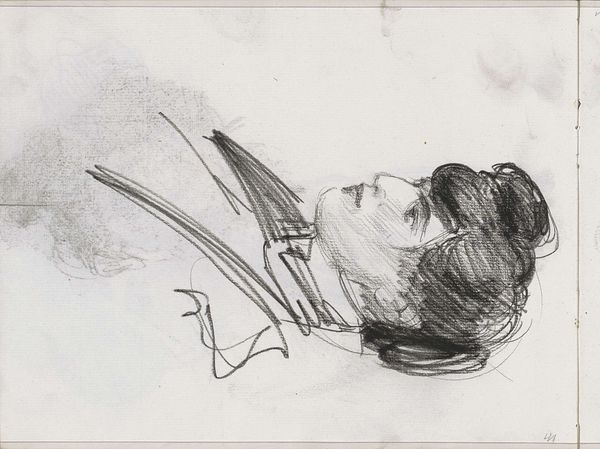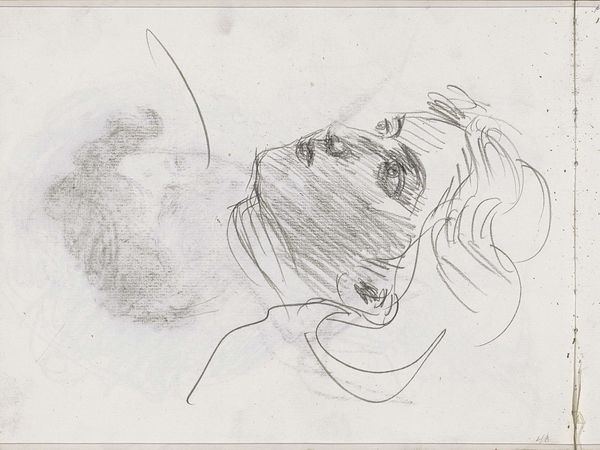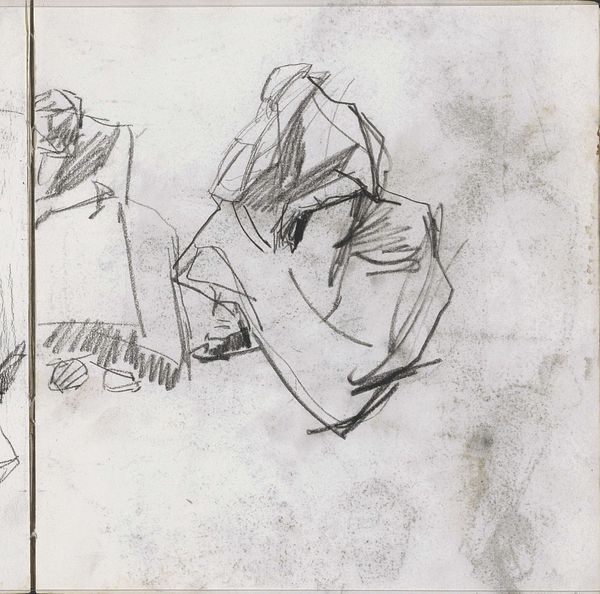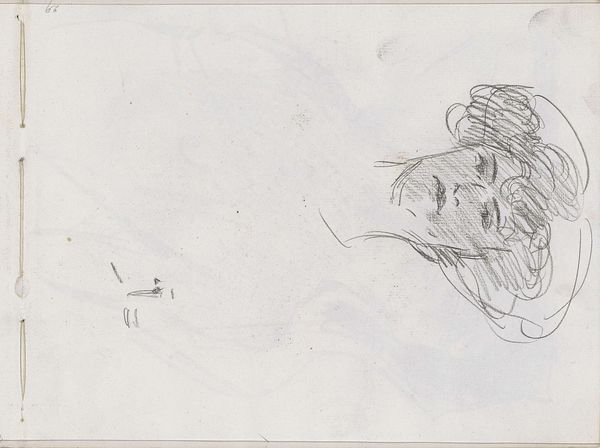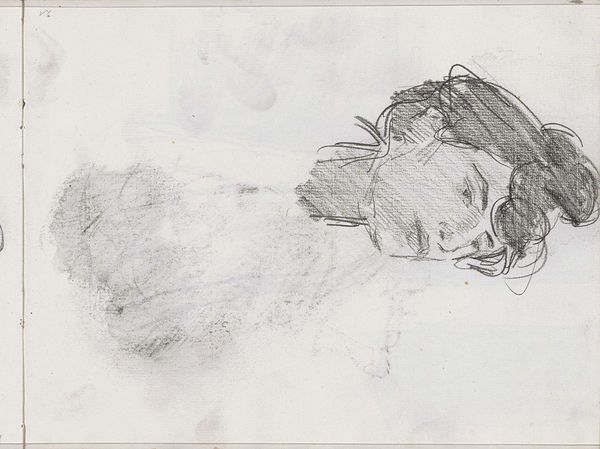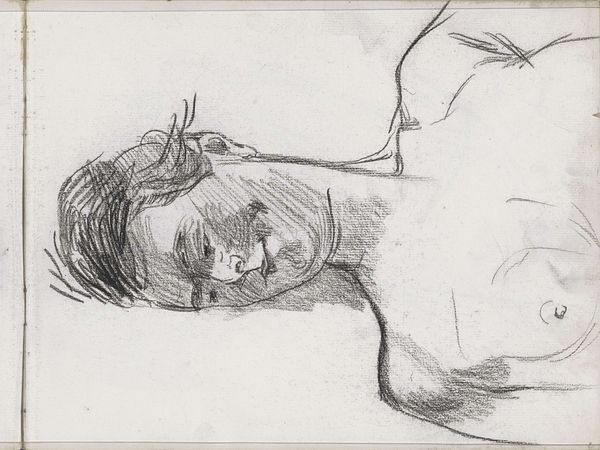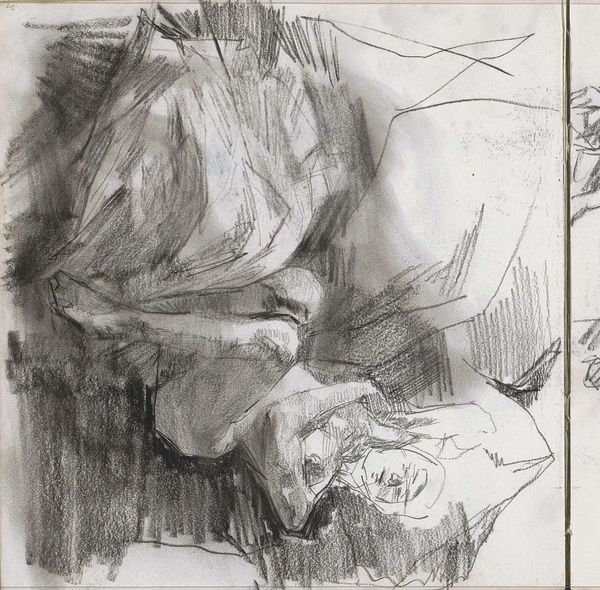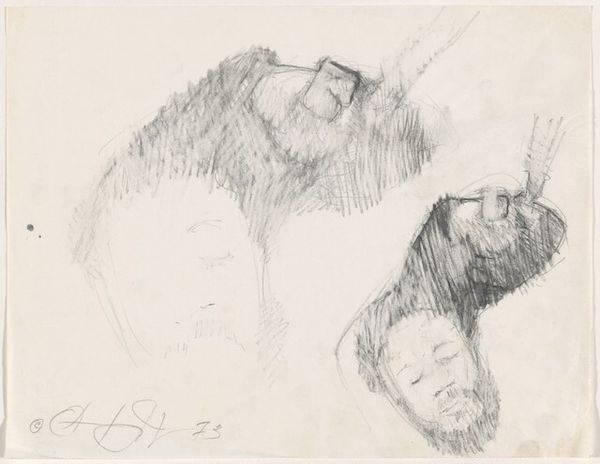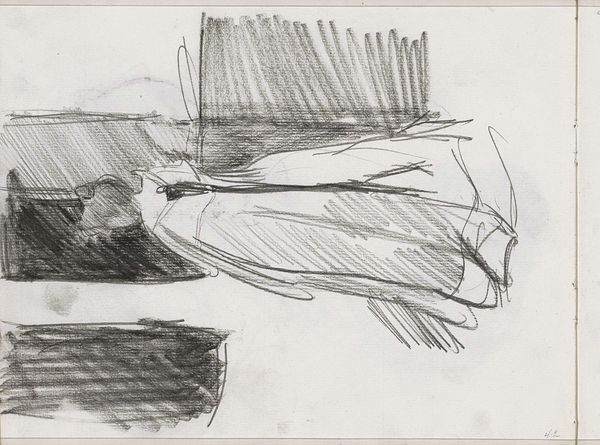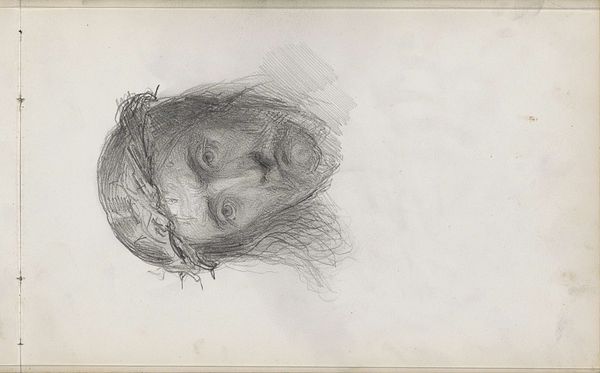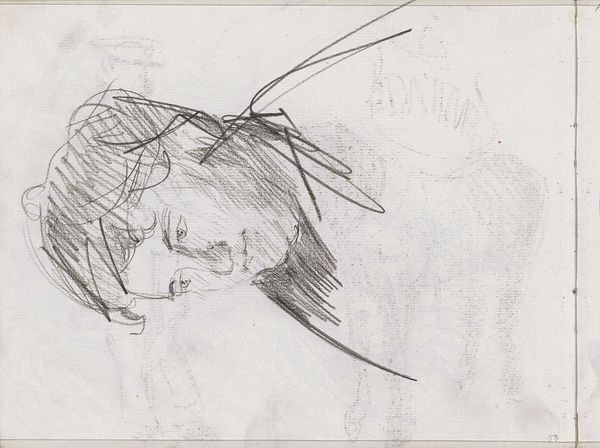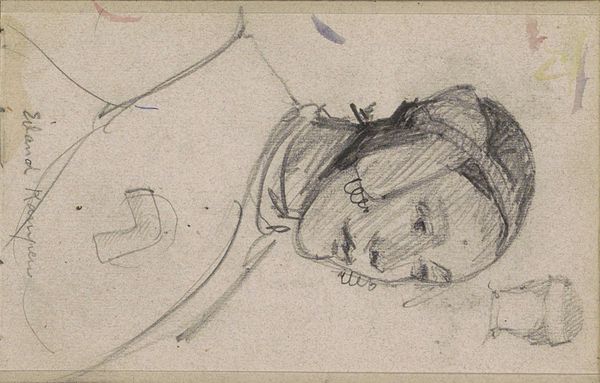
Copyright: Rijks Museum: Open Domain
Curator: What we're looking at here is a self-portrait by Isaac Israels, likely created between 1875 and 1934. The medium is simple: pencil on paper. It’s held in the collection of the Rijksmuseum. Editor: The mood strikes me as somber, even secretive. The shading is so dense, it obscures more than it reveals. There’s also a hurried quality to the marks, a restless energy evident in the lines. Curator: Absolutely. Look how Israels uses the pencil to build form through a kind of chiaroscuro. The hatching is intense, particularly around the hat and eye, creating depth but also obscuring details. There’s a tension between representation and abstraction here. Editor: I'm interested in the hat specifically. Hats in self-portraits often signify a conscious construction of persona. Here, the darkness could suggest a hidden aspect, perhaps a struggle with identity or public image. What stories are concealed beneath it? Curator: Indeed, consider how the Impressionists, and Israels was definitely leaning that way, played with capturing fleeting moments. Is this sketch a fragment of a larger investigation, a glimpse into the artist’s evolving self-perception? Notice the loose, almost ghost-like sketch in the upper part of the page: almost like he drew multiple versions. Editor: Yes, this connects to ideas about the performative self. The image presents an evolving and fragmented concept of identity and echoes broader social anxieties around performance. There’s a certain psychological vulnerability revealed in leaving those sketches visible rather than erased. Curator: Precisely! The materiality also speaks to that idea of artistic process, the work being more concerned with experimentation than a final, polished outcome. The unfinished quality of this artwork almost undermines our expectations of what a self-portrait might be. Editor: And as such, subverts traditional iconography by refusing a fixed interpretation. This self-portrait remains open to introspection, and encourages viewers to project their own ideas about the meaning of identity onto the image. I find it powerful because of its ambiguity, not in spite of it. Curator: A perfect example of how an artist can make compelling artwork using rudimentary means. I always find beauty in a work of art that demands further analysis.
Comments
No comments
Be the first to comment and join the conversation on the ultimate creative platform.
